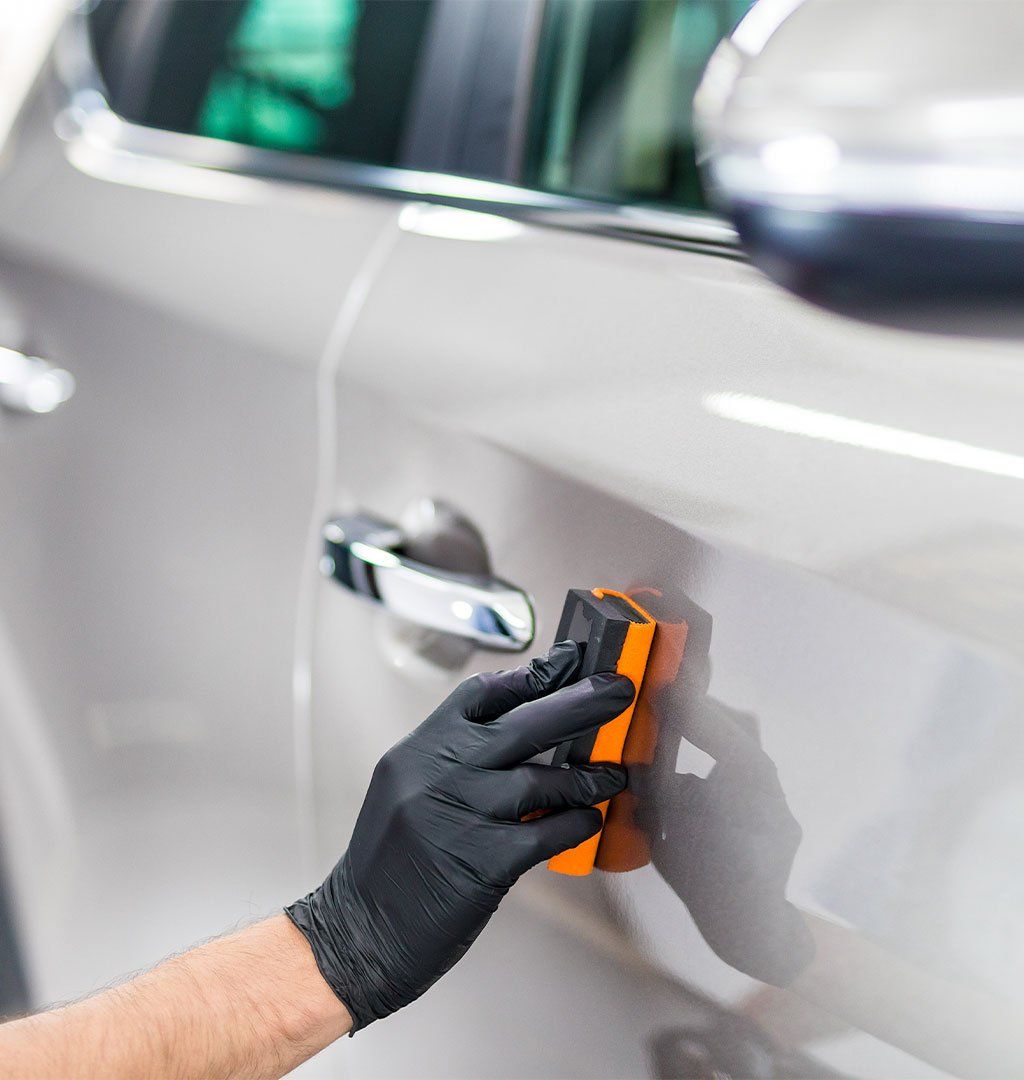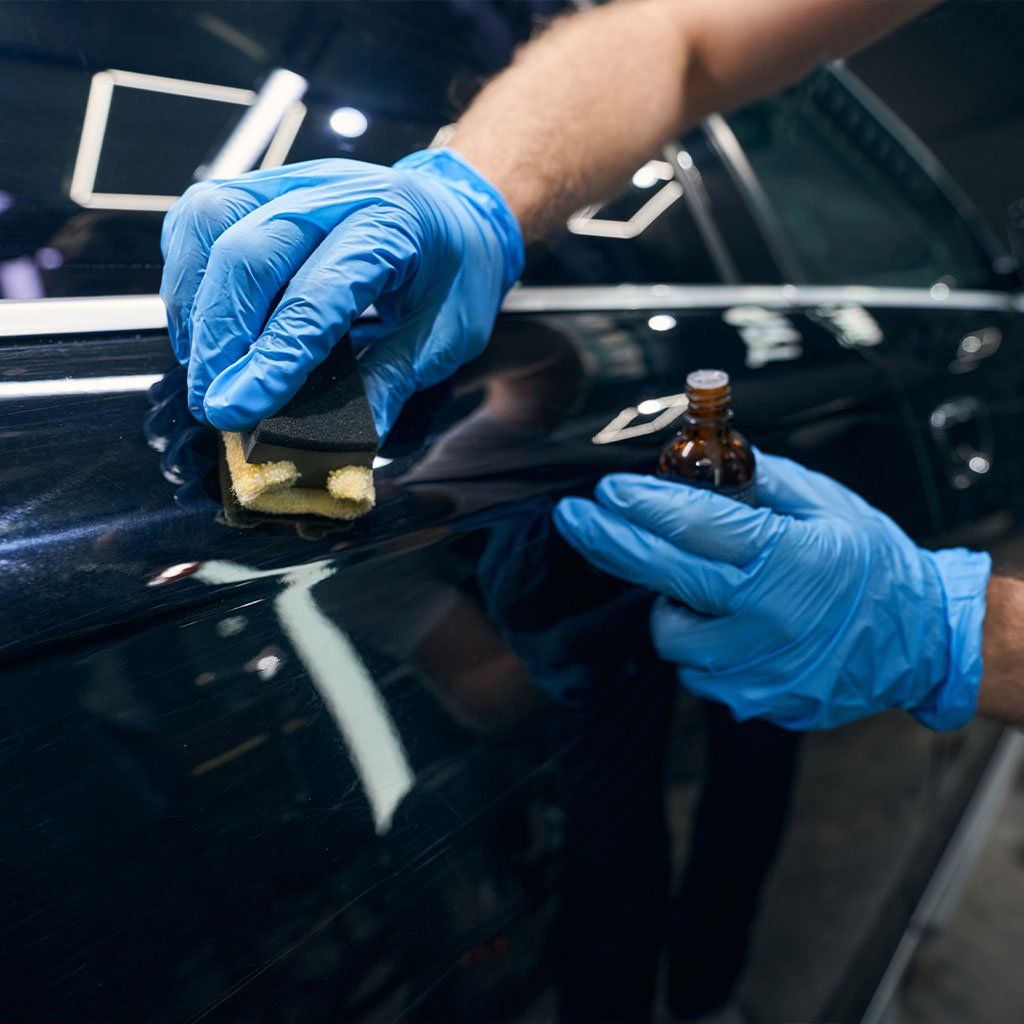The Science of Ceramic Coatings: How They Protect Surfaces from Water and More
CALL (708) 574-8496
GET A FREE ESTIMATEIn an age where technological innovations continue to disrupt traditional norms, the science of ceramic coatings is a revelation, shielding surfaces from water and more. This advanced protective layer has now migrated into mainstream usage and it's creating quite a splash. Read on as we dive beneath the surface to unravel the cutting-edge developments and intriguing specifics behind ceramic coatings—your ultimate guardian against moisture and beyond. Buckle up; this isn't just another quick fix-it-all product, but a revolutionary technological marvel!
Ceramic coatings offer significant advantages in repelling water compared to other protective solutions. They create a hydrophobic surface, causing water to bead up and roll off effortlessly, minimizing water spots and potential damage from standing water. Additionally, the self-cleaning properties of ceramic coatings make cleaning and drying easier, as dirt and contaminants are less likely to stick to the coated surface.
The Science of Hydrophobic Ceramic Coatings
Ceramic coatings have gained significant popularity in recent years due to their exceptional protective properties. But what exactly makes them hydrophobic? The science behind hydrophobic ceramic coatings lies in the molecular structure and composition of these coatings.
The key ingredient in ceramic coatings is silicon dioxide, commonly known as silica. Silica has unique properties that make it ideal for creating a hydrophobic surface. When applied to a surface, such as a car's paintwork, the silicon dioxide molecules form a tight bond with the clearcoat. This bonding process creates a protective layer that enhances the surface's hydrophobicity.
Silicone dioxide or SiO2, molecules are composed of one silicon atom bonded to two oxygen atoms. These molecules arrange themselves in a three-dimensional network, forming a strong and stable structure on the coated surface. The resulting layer has fantastic water-repellent properties, preventing water droplets from adhering to the surface and causing water to bead up and roll off instead. This hydrophobic behavior stems from the strong intermolecular forces between water molecules (hydrogen bonding) versus the weaker interaction between water and the ceramic coating. The chemistry behind this interaction allows for reduced water adherence and increased surface tension on treated surfaces.
Molecular Interaction Between Ceramic and Water
The molecular interaction between the hydrophobic ceramic coating and water is fascinating. When water comes into contact with a ceramic-coated surface, it forms cohesive water droplets due to its high surface tension. In simple terms, this means that the individual water molecules pull together tightly, minimizing contact with the ceramic coating. This cohesive behavior is due to the intermolecular forces within the water itself, known as hydrogen bonding. These forces create resistance against spreading and increase the overall surface tension.
Meanwhile, the ceramic coating's hydrophobic properties further enhance this interaction. The coating's smooth and sturdy surface reduces water molecules' points of contact, allowing them to easily slide off. This unique combination of cohesive water behavior and the repelling nature of the ceramic coating creates excellent self-cleaning properties, reducing residue and contaminants on surfaces.
Chemical Resistance of Ceramic Coatings
One of the remarkable properties of ceramic coatings is their exceptional chemical resistance. These coatings are designed to withstand the harsh effects of various chemical substances, making them highly valuable in protecting vehicle surfaces from corrosion and damage. The composition and structure of ceramic coatings contribute to their ability to resist chemical degradation. The chemical resistance of ceramic coatings not only protects surfaces but also extends their lifespan, preventing the need for frequent repairs or replacements. It provides peace of mind to know that your vehicle’s paint will withstand exposure to aggressive chemicals without compromising its integrity.
Durability and Protection of Ceramic Coatings
When it comes to maintaining the pristine appearance of your vehicle or any other surface, durability and protection are paramount. Ceramic coatings excel in these areas, offering unmatched long-term protection against various external threats. Unlike traditional waxes and sealants, ceramic coatings form a permanent bond with the surface, providing a durable layer that can withstand harsh elements and everyday wear and tear. This protective layer acts as a barrier against UV rays, oxidation, chemical stains, bird droppings, tree sap, and other contaminants that can damage the surface of your vehicle.
Imagine parking your car outside on a scorching summer day. Without any protection, the intense heat from the sun can quickly fade the paint and cause unsightly damage. However, with a ceramic coating applied to your vehicle's exterior, you can rest assured knowing that it is shielded from harmful UV rays, protecting its color integrity for years to come. Ceramic coatings have revolutionized the way we protect surfaces by offering unrivaled durability and safeguarding against a wide range of environmental factors. They provide peace of mind, allowing you to enjoy your vehicle or any other surfaces while knowing they are well protected.
Self-Cleaning Properties of Ceramic Coating
One standout benefit of ceramic coatings is their remarkable self-cleaning properties. Thanks to their hydrophobic nature, water and dirt bead up and slide off surfaces coated with ceramics effortlessly. This means less time spent on washing and drying your vehicle while achieving a consistently clean appearance. The self-cleaning property of ceramic coatings arises from their ability to create a microscopically smooth and ultra-hydrophobic surface. The hydrophobicity allows water droplets to encapsulate dirt particles as they roll off the surface, effectively carrying away contaminants without leaving streaks or residue behind. Additionally, this self-cleaning feature helps prevent dirt buildup over time, reducing the need for frequent washing.
However, it's important to note that self-cleaning properties do not make your vehicle impervious to all types of messes. While water spray and rain can help remove loose dirt or dust, heavier grime or stubborn stains may still require manual cleaning. Nevertheless, the self-cleaning capabilities of ceramic coatings significantly reduce the effort and time required to maintain a clean and polished surface.

Benefits of Ceramic Coatings for Vehicles
Ceramic coatings have been gaining popularity as a reliable and long-lasting method to protect vehicles' surfaces. These coatings, made of liquid polymers infused with ceramic nanoparticles, offer numerous benefits:
First and foremost, ceramic coatings provide enhanced durability and protection against UV rays and other environmental contaminants. The coating's hard, transparent layer acts as a barrier to protect the underlying paint from harm. Additionally, ceramic coatings make cleaning and maintenance easier. Due to their hydrophobic nature, water beads up and rolls off the surface instead of sticking to it. This means less time spent scrubbing away stubborn dirt or grime—a quick rinse is often enough to restore the vehicle's pristine appearance.
Ceramic coatings also enhance the overall aesthetic of the vehicle by providing a deep gloss and shine. The coating's high refractive index allows light to reflect off the surface brilliantly, giving it a showroom-like finish that can make any car enthusiast proud. However, it's essential to acknowledge that there are some limitations to ceramic coatings. While they offer excellent protection against most elements, they may not be as effective when it comes to heavy impacts or rock chips. In these cases, additional protective measures, such as paint protection film (PPF), may be necessary. Overall, ceramic coatings offer a comprehensive package of benefits, from durable protection against environmental hazards to enhanced appearance, making them an attractive choice for vehicle owners seeking long-lasting paint protection solutions.
Comparing Ceramic Coatings with Other Protective Measures
When it comes to preserving a vehicle's paintwork, several protective measures exist on the market. One common alternative to ceramic coatings is traditional waxing. Wax offers temporary protection against environmental pollutants and adds a smooth layer on top of the paint. However, wax tends to degrade quickly and may require frequent reapplications for continued effectiveness. In contrast, ceramic coatings provide a far more robust and long-lasting protection solution. While wax may last up to a few months, ceramic coatings can offer durability for several years, depending on the specific product and maintenance regimen. Traditional waxes cannot compare to the solid bond that ceramic coatings create, along with their resistance to UV rays and washing chemicals.
Ceramic Coating Experts in Carol Stream, IL
Are you yearning to elevate your vehicle's appearance to a level of unmatched brilliance and protection? Look no further than D'Andrea Auto Detailing, the leading
ceramic coating experts in Carol Stream, IL. With a steadfast dedication to craftsmanship and attention to detail, our seasoned professionals utilize the finest ceramic coating formulations to bestow your car with a radiant shine, superior durability, and unparalleled resistance against environmental contaminants. Experience the transformative power of our cutting-edge ceramic coatings, designed to enhance and preserve your vehicle's showroom finish for years to come. Don't settle for mediocrity; entrust your prized possession to the proven expertise of D'Andrea Auto Detailing. Schedule your appointment today and discover why discerning car enthusiasts in Carol Stream trust us for unmatched ceramic coating excellence!
D’Andrea Auto Detailing was founded in 2021, setting out to be part of the solution to the obstacle of achieving automotive protection and perfection in the often messy Midwest city of Carol Stream, Illinois. We provide two types of high-quality vehicle paint protection services - Undrdog Ceramic Coatings and XPEL Paint Protection Films - alongside individual interior rejuvenation and exterior decontamination services. We aim to help both top-tier sports cars and daily drivers always look their best and operate even better!
Quick Links
Hours of Operation
Monday-Friday: 8:00 AM - 5:00 PM
Saturday - Sunday: Closed
This website was designed by the team at
Detailers Roadmap, a platform developed for detailing operators across the globe.
All Rights Reserved | 8bitcreative, LLC | D’Andrea Auto Detailing



